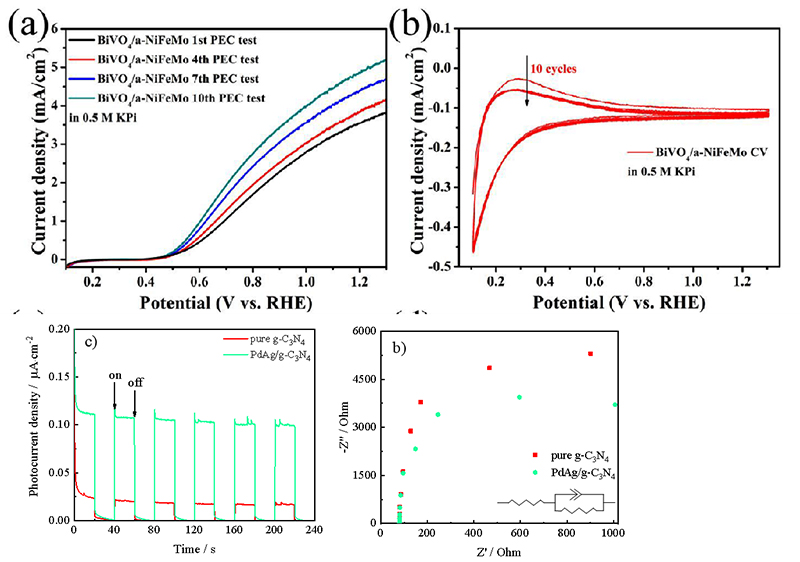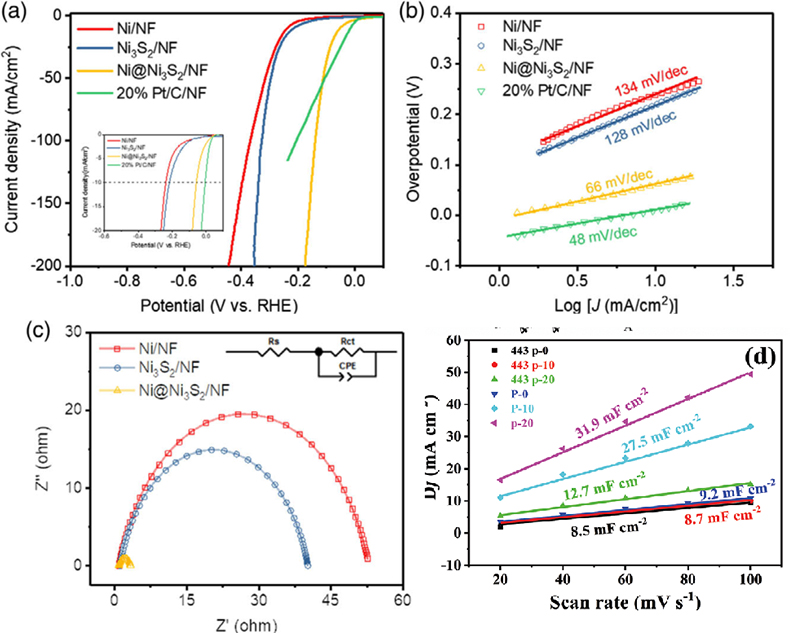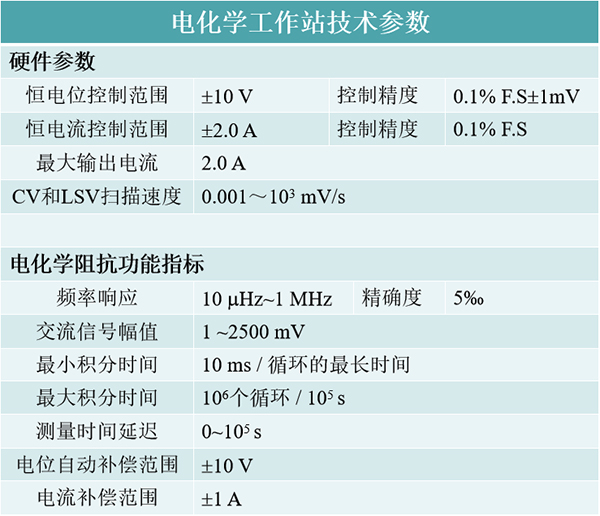An electrochemical workstation, abbreviated as an electrochemical measurement system, is an instrument used to control and monitor the current and potential in an electrochemical cell and other changes in electrochemical parameters. It finds applications in electrochemical analysis, electrosynthesis, electrodeposition, electrolysis, and research into reaction mechanisms. It is also used in the study of energy materials, advanced functional materials, and the performance of sensors in various fields.
In the field of photocatalysis and photoelectrocatalysis, it is mainly used to explore the separation and transport properties of charge carriers in catalysts.
Linear Sweep Voltammetry (LSV)
Cyclic Voltammetry (CV)
Square Wave Voltammetry (SWV)
Chronoamperometry (i-t curve)
Tafel Analysis (Tafel curve)
Electrochemical Impedance Spectroscopy (EIS)
Potential Scan (Mott-Schottky curve)

(a) LSV Curve (b) CV Curve[1]
(c) Photocurrent Curve (d) EIS Curve[2]

(a) Polarization Curve (b) Tafel Curve (c) Nyquist Curve[3]
(d) Double-Layer Capacitance Cdl [4]
